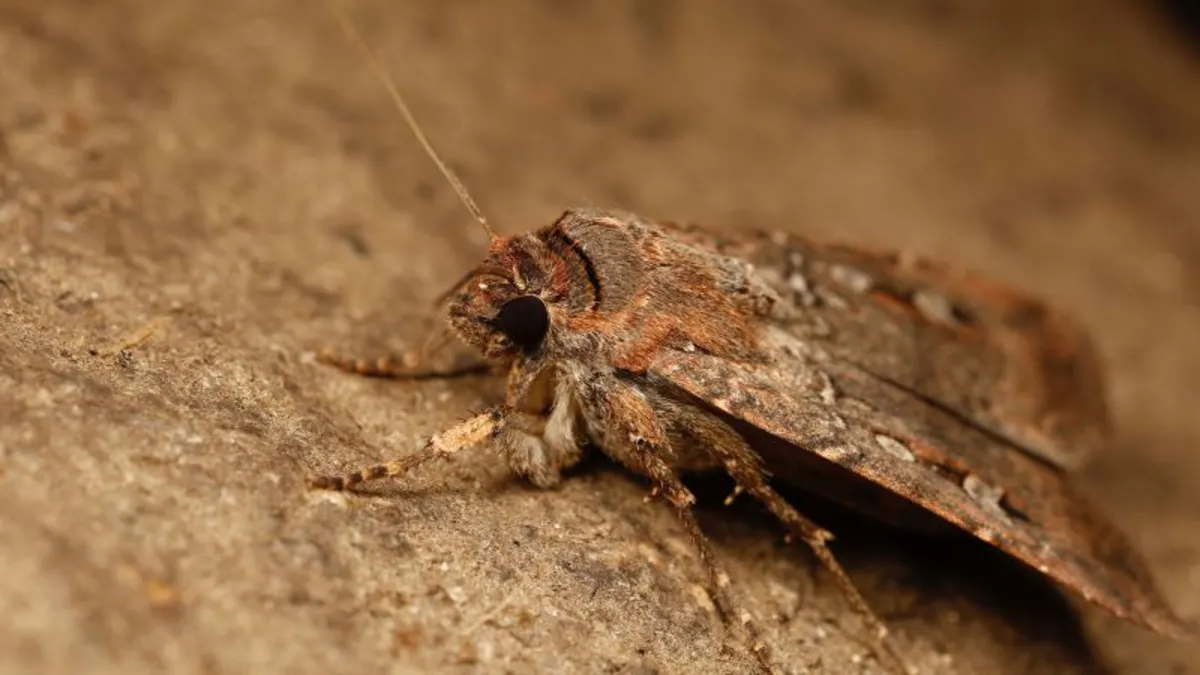
Every year, a remarkable species known as the Bogong moth embarks on a grueling migration journey of approximately 620 miles (1,000 kilometers) across southeastern Australia. This nighttime migration is a feat that only humans and migratory birds have been known to accomplish. A recent study has shed light on the fascinating navigation techniques employed by these moths as they travel to cooler caves in the Australian Alps.
During the spring, Bogong moths seek refuge from the heat by migrating to the cool caves of the Australian Alps, where they enter a dormant state. In the fall, they make the arduous journey back to their original habitats to mate and ultimately die. This intricate migratory pattern showcases the moths' remarkable ability to navigate vast distances with precision.
Researchers have replicated the conditions of this extraordinary journey in a laboratory setting, discovering that the moths utilize the starry night sky as a navigational tool. According to Eric Warrant, head of the Division of Sensory Biology at Lund University in Sweden and a co-author of the study published in the journal Nature, “It is an act of true navigation.” The study reveals that the moths can use the stars as a compass to determine their geographic direction, marking a significant finding for invertebrates.
Interestingly, stars are not the sole navigational cue for the Bogong moths. They have also been found to detect the Earth's magnetic field, as evidenced by prior research conducted by Warrant and his colleagues. By employing two navigational cues, the moths can compensate for potential failures in either system, such as during cloudy nights or magnetic anomalies.
To test the hypothesis that Bogong moths use visual cues for navigation, Warrant and his team set up a laboratory experiment approximately 93 miles (150 kilometers) from the moths’ final destination. Capturing the moths using a light trap, the researchers attached a thin, nonmagnetic tungsten rod to each moth, allowing them to fly freely while an optical sensor tracked their direction.
In an enclosed cylindrical “moth arena,” the researchers projected an image of the southern night sky, replicating the external conditions. Remarkably, the moths consistently flew in their inherited migratory direction, demonstrating their innate navigational abilities.
The researchers created a “magnetic vacuum” using a Helmholtz coil, removing the influence of the Earth's magnetic field. This ensured that the moths had to rely solely on visual cues from the stars. “They had to rely on the stars. And they did,” Warrant confirmed, emphasizing the moths' remarkable navigational skills.
Although the Bogong moths have relatively small eyes, they possess the ability to perceive the nocturnal world about 15 times more brightly than humans. This enhanced vision allows them to see the Milky Way more vividly, which Warrant suggests they may use as a visual compass during their migrations.
While only a few creatures, such as birds and humans, navigate using similar methods, the Bogong moth stands out for its unique migratory pattern. The North American monarch butterfly also migrates long distances but uses the sun as a compass. In contrast, the Bogong moth relies on the stars at night, showcasing a significant difference in migratory strategies.
Despite their fascinating migratory behavior, Bogong moth populations have dramatically declined in recent years, leading to their classification as an endangered species on the International Union for Conservation of Nature’s Red List. Researchers like Warrant continue to investigate the complexities of moth navigation, with many questions remaining about how these insects integrate their star and magnetic compasses.
The findings regarding the navigation of Bogong moths not only deepen our understanding of insect migration but also highlight the incredible capabilities of these creatures. As scientists continue to explore the nuances of how Bogong moths navigate, this research opens new avenues for understanding the broader mechanisms of migration in insects and other nocturnal species.